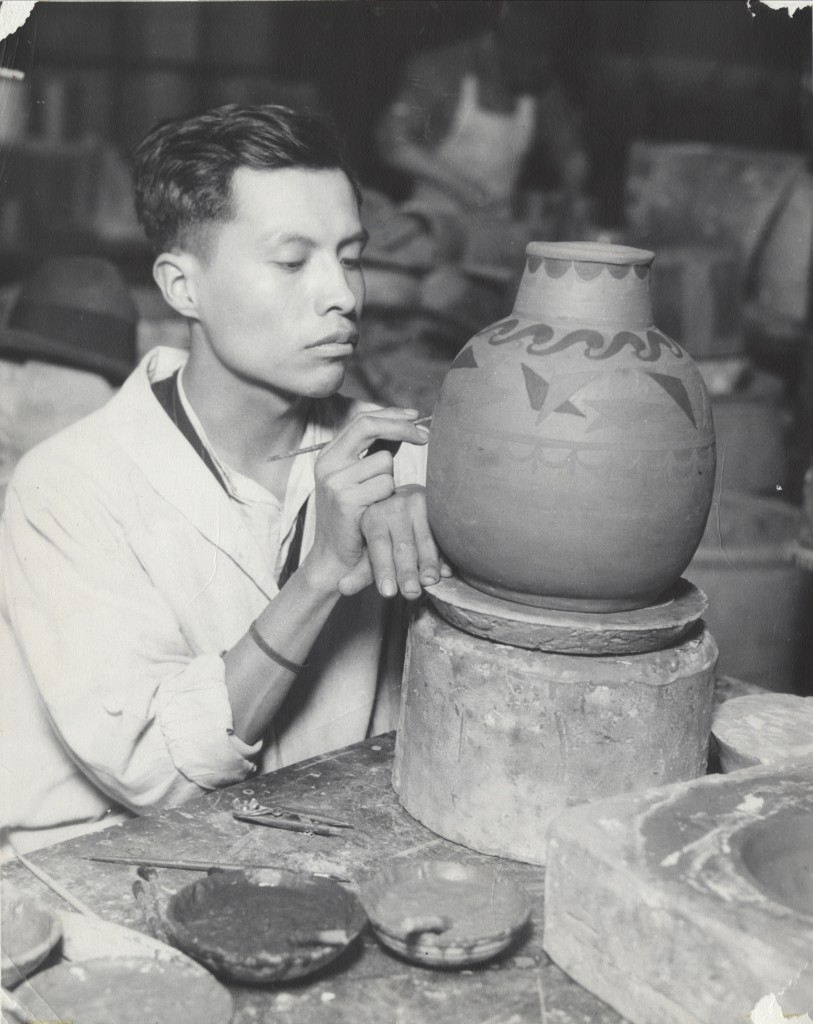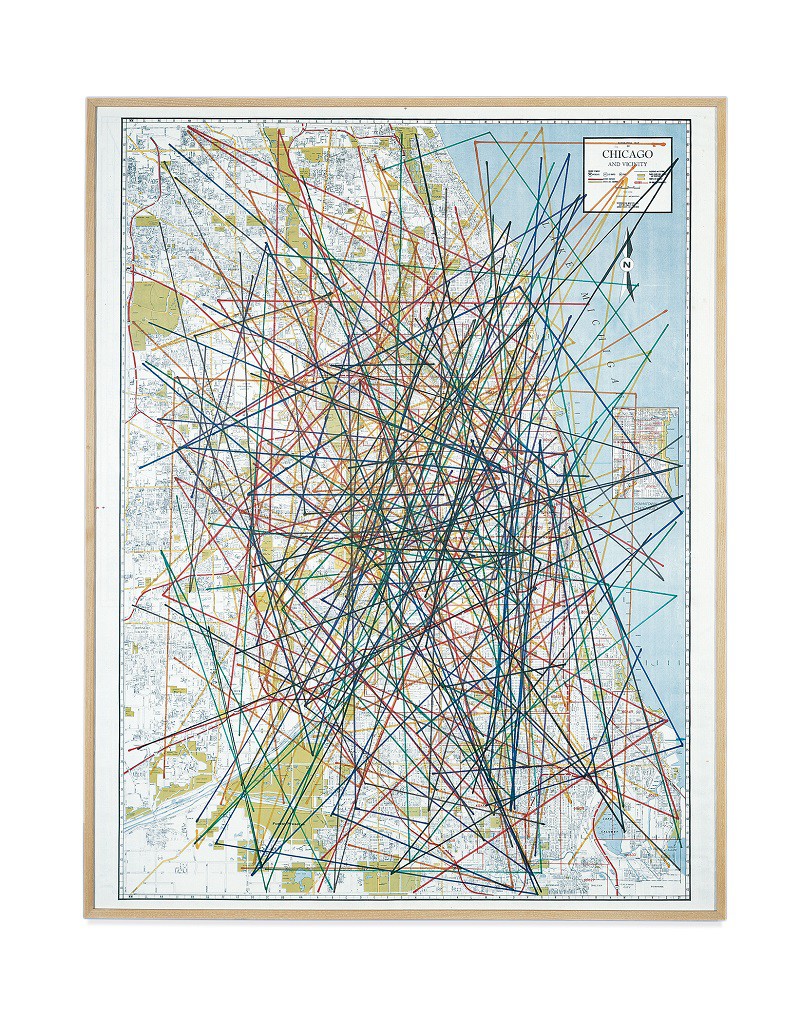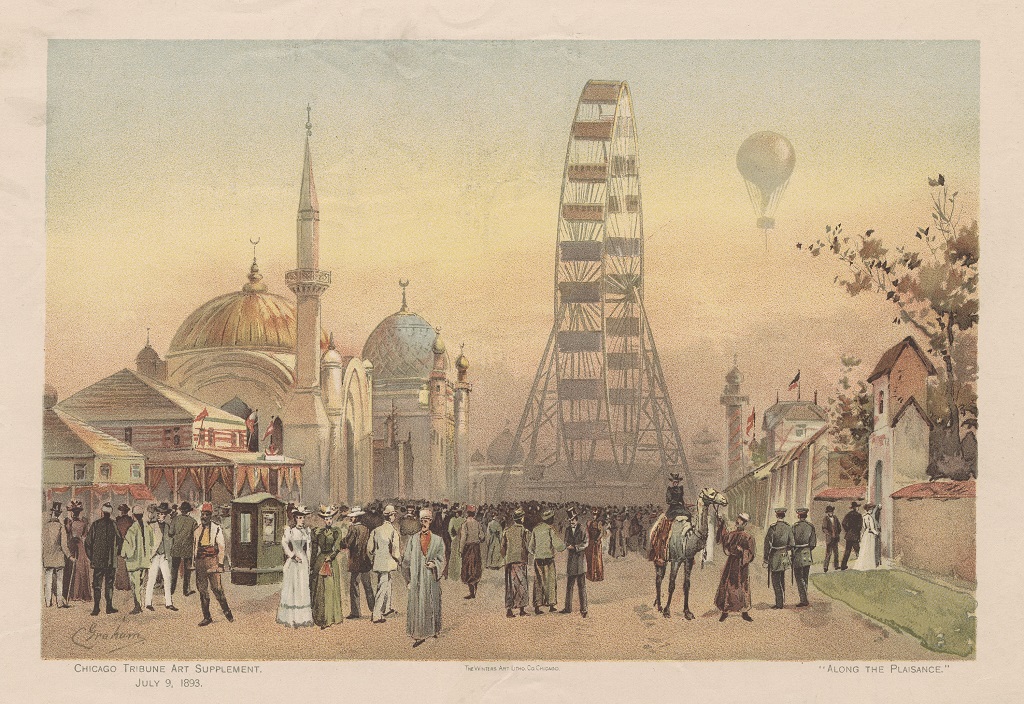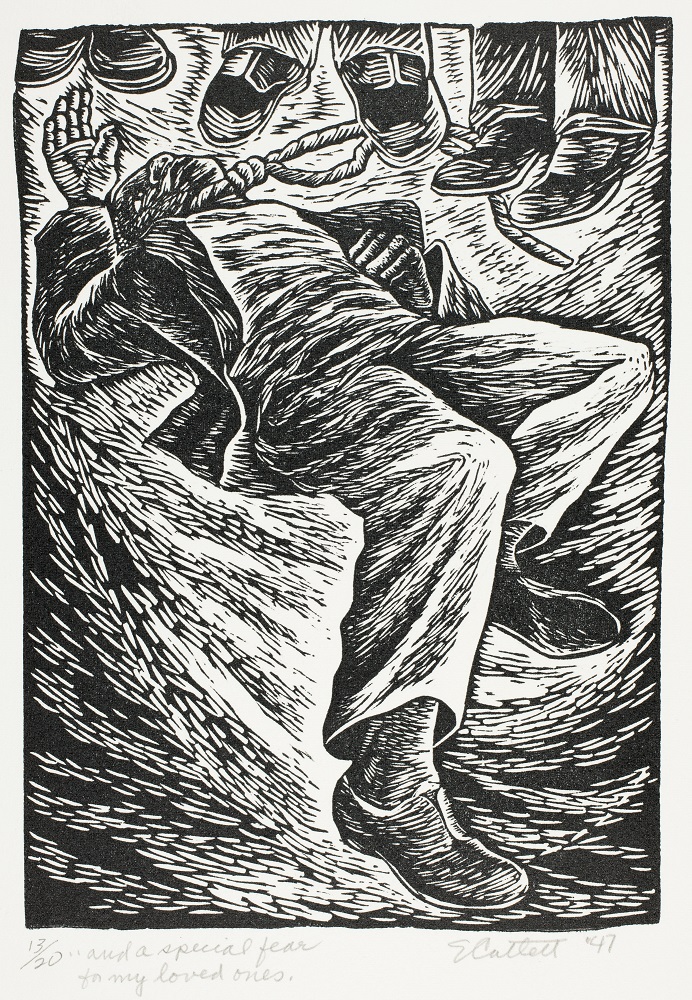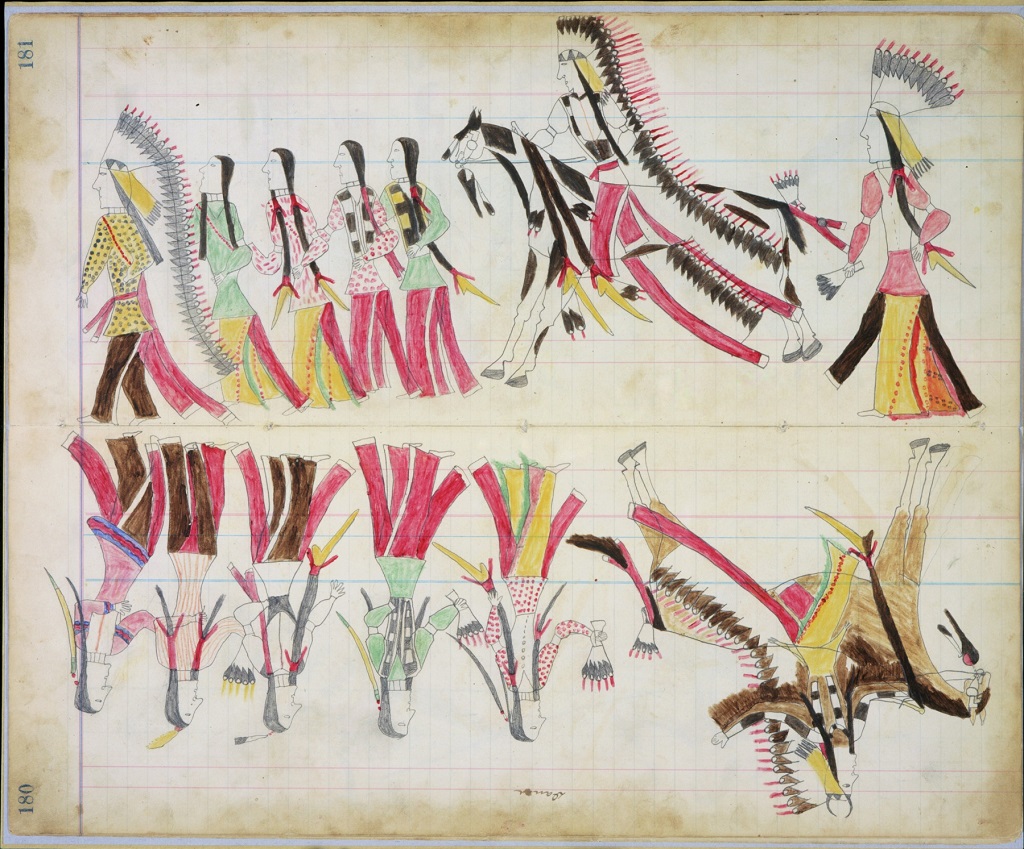Author:
The Jane Addams Hull-House Museum Staff
At First Glance
Describe the figure in this photograph. What is he doing? Where might this scene have taken place? When do you think this photograph was made? What evidence do you see that helps you determine the time period?
Read to Build Knowledge
Wallace Kirkland’s photograph Jesus Torres at Hull-House Kilns, 1927 provides a glimpse into the artistic process of a potter at work. Jesus Torres sits in a workroom, surrounded by pottery tools, artworks, and fellow artists fading into the distance. Torres expertly uses his left hand to support his right hand as he paints details on his pot. He looks deeply focused on the work in front of him.
In the early 1920s, Torres immigrated from Silao, Mexico to the United States, crossing the country as a migrant worker before settling in Chicago. Unlike his previous work as a manual laborer, Torres found an opportunity for creativity and self-expression in the art he created at Chicago’s Hull-House Settlement. Founded in 1889 by Jane Addams, Hull-House served as a community center for activities of all kinds, but especially supported those related to arts and culture. Hull-House was a meeting ground for working-class immigrants in its neighborhood and the wealthy, educated residents who lived at the settlement. Mexican migrants like Jesus Torres, who initially came to the U.S. because of the country’s continual need for manual labor, greatly contributed to the cultural life of the Hull-House Settlement in the 1920s and 1930s.
The artistic and political developments in Mexico during this time also intrigued many Chicago artists. Hull-House resident artists such as Myrtle Merritt French, Morris Topchevsky, and Emily Edwards traveled to Mexico to study under Mexican artists including Diego Rivera, and then returned to teach classes at Hull-House that incorporated the modern style of Mexican art into their artistic practices.
The Hull-House Kilns opened in 1927 to provide an opportunity for neighbors to learn artistic skills, and ultimately make a living by selling their work. They established a shop on the fashionable Michigan Avenue, selling pottery to Chicagoans who were interested in the new and interesting art. Yet the Hull-House kilns only made pottery for ten years. The success of similarly colorful but machine-made pottery, like that made by the Fiesta Ware Company, was one of many reasons that contributed to the closure of the Hull-House kilns in 1937. However, the experience of making handmade pottery had a lasting impact on Hull-House artists like Jesus Torres, who continued to successfully make and sell his art. He was photographed by Wallace Kirkland, another Hull-House artist, whose many images of the Hull-House neighborhood and activities document the immigrant experience in Chicago. Kirkland went on to photograph politicians, activists, and leaders of all kinds for Time magazine, but he would always return to the Hull-House neighborhood that had so shaped his career.
Analyze and Interpret
- Why do you think Wallace Kirkland took this photo of Jesus Torres at work? What do you think Kirkland’s point of view is about Torres? Explain your ideas with evidence from the photograph.
- Given Jesus Torres’s background as a migrant worker, why do you think he came to Hull-House to make pottery?
- What do you notice when you look at the pot that Jesus Torres is painting? Describe its shape, size, and pattern. Do you think his heritage influenced his style of pottery?
- Do you think Torres’s involvement with the Hull-House Kilns helped him adapt to his new life in Chicago? In what ways? How do you know?
For further reading (teachers)
Ganz, Cheryl R., and Margaret Strobel. Pots of Promise: Mexicans and Pottery at Hull-House, 1920-1940. Chicago: University of Illinois Press, 2004.
Jane Addams HullHouse Museum. “Urban Experience in Chicago: Hull-House and Its Neighborhoods, 1889-1963,” http://www.uic.edu/jaddams/hull/urbanexp/contents.htm
Oehler, Sarah Kelly. They Seek a City: Chicago and the Art of Migration 1910–1950. Chicago: Art Institute of Chicago, 2013.
Eastwood, Carolyn. Near West Side Stories: Struggles for Community in Chicago’s Maxwell Street Neighborhood. Chicago: Lake Claremont Press, 2002.

